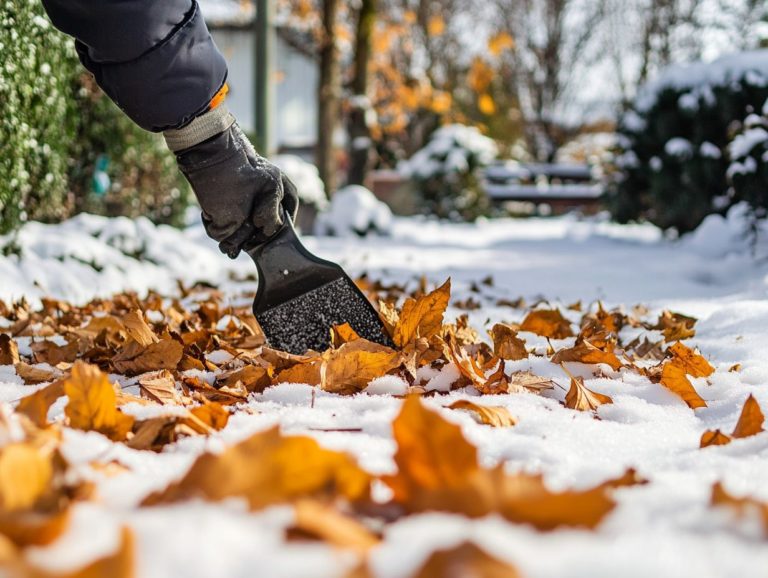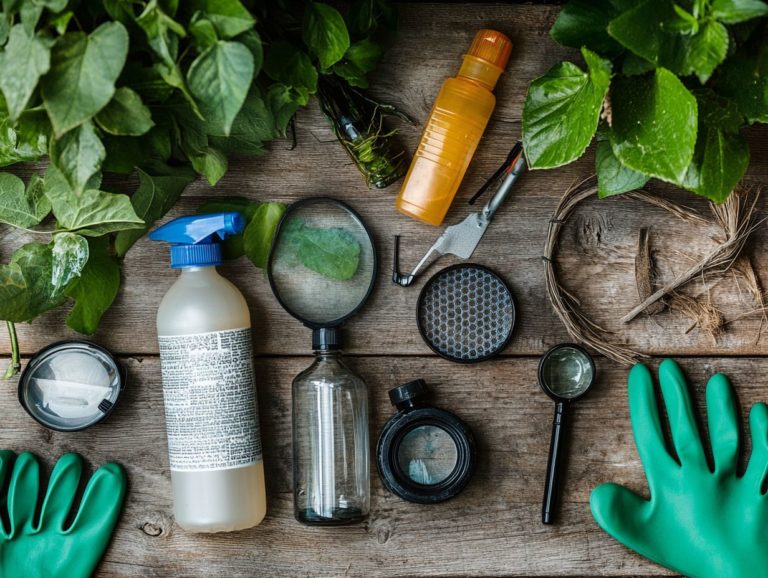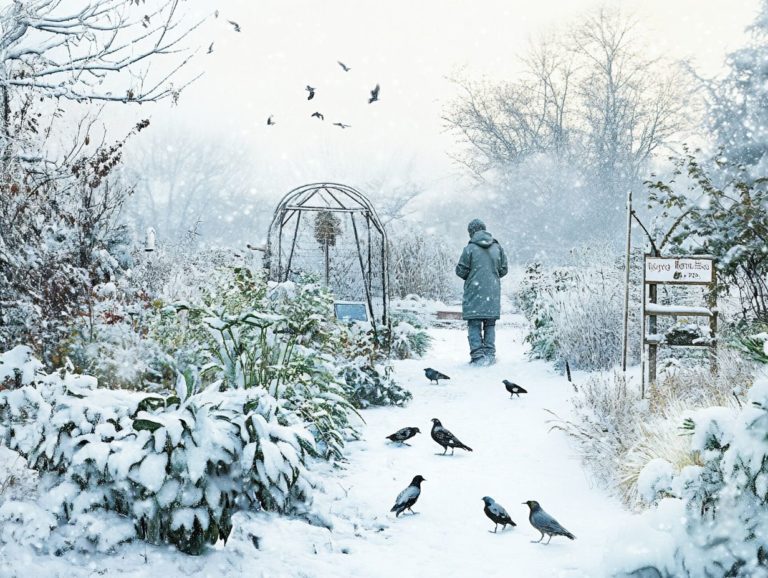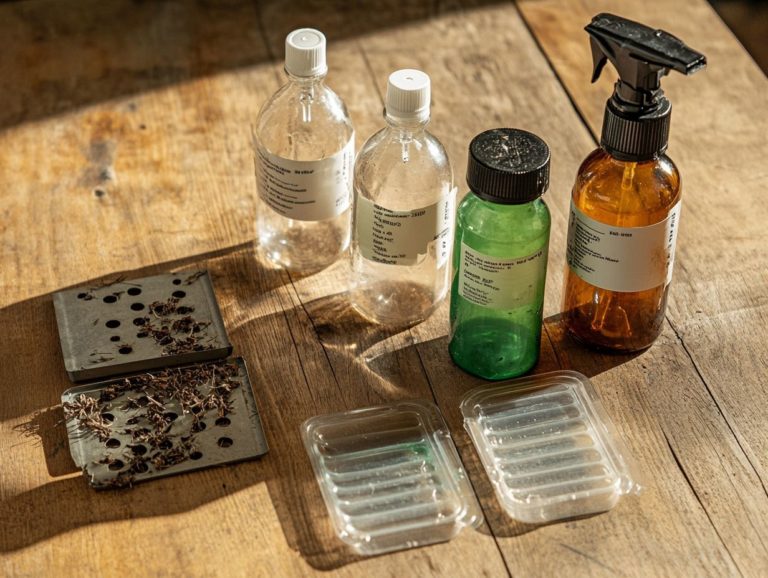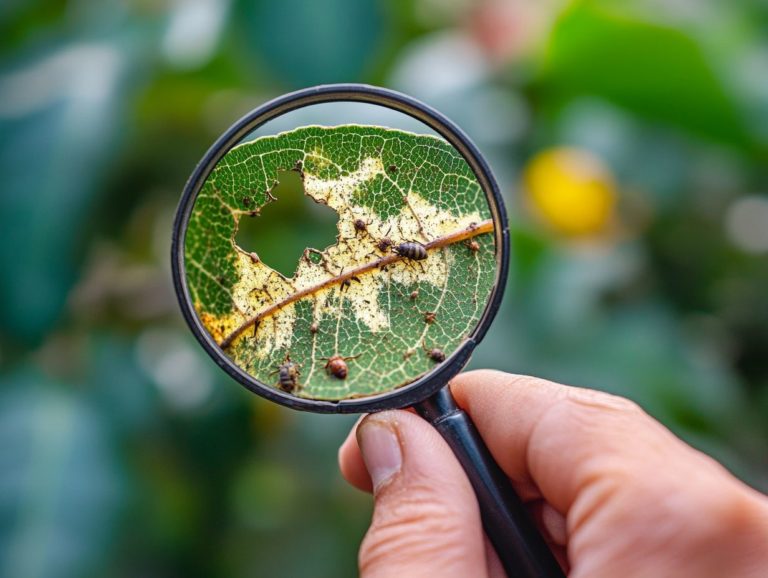Top Cold-Climate Pest Management Strategies
Cold climates may seem unwelcoming to pests, yet many creatures have adapted to thrive even in frigid conditions.
Understanding which pests invade during winter and the challenges they bring is vital for effective management.
This article explores various strategies to prevent infestations. From eco-friendly options to chemical solutions, we help you keep your home pest-free all year.
Whether you re dealing with an existing pest problem or strengthening your defenses, you ll find practical insights and tips here.
Contents
- Key Takeaways:
- Understanding Cold-Climate Pests
- Preventing Pest Infestations in Cold Climates
- Natural Pest Control Methods
- Chemical Pest Control Options
- Managing Pest Infestations in Cold Climates
- Maintaining a Pest-Free Environment in Cold Climates
- Frequently Asked Questions
- What are the top cold-climate pest management strategies?
- How can I prevent pests from entering my home in cold climates?
- Are there any natural pest control methods for cold climates?
- How often should I inspect my home for pests in cold climates?
- What should I do if I find a pest infestation in my home in a cold climate?
- How can I protect my outdoor plants from pests in cold climates?
Key Takeaways:
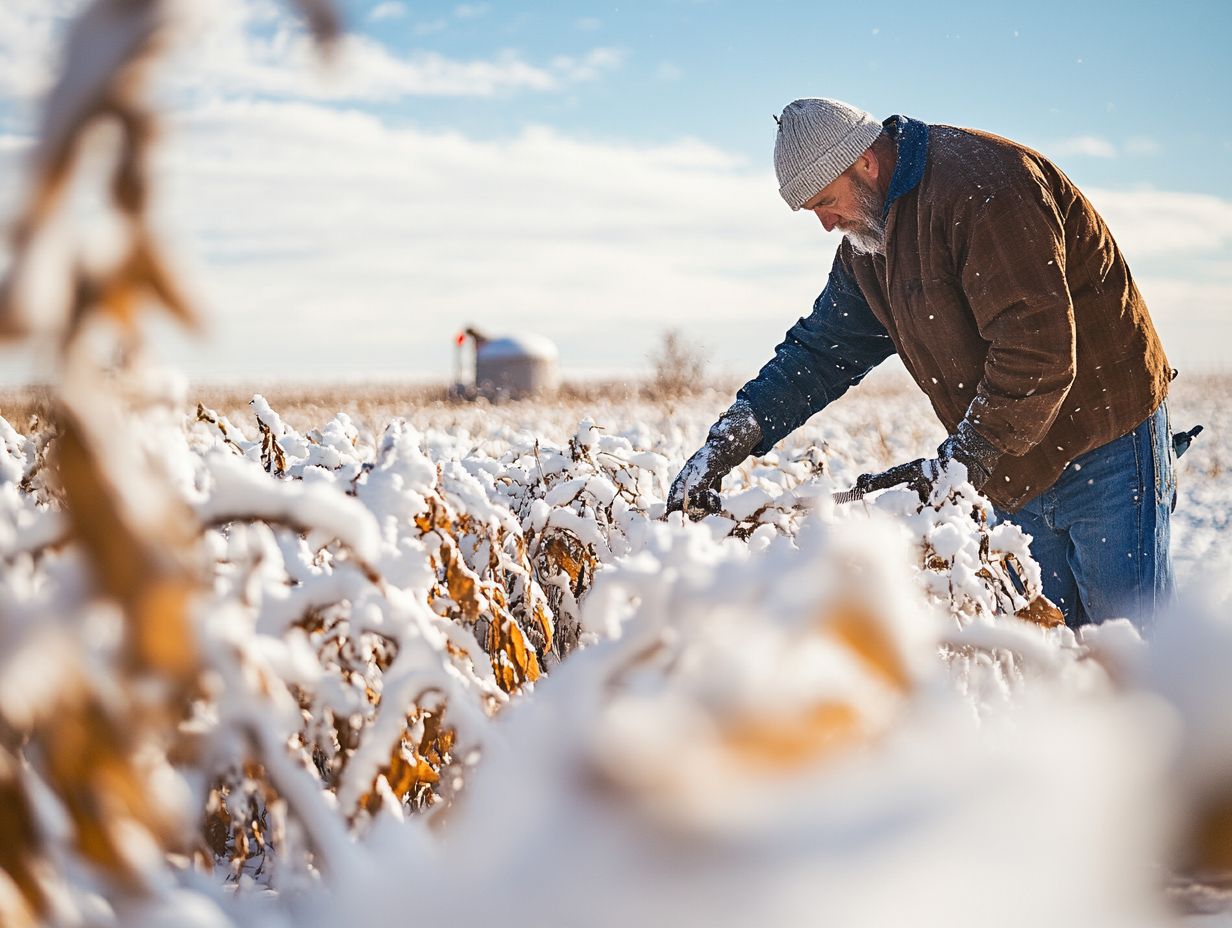
- 1. Knowing how common pests behave in cold climates helps prevent infestations.
- 2. Eco-friendly and non-toxic pest control methods are safe and effective alternatives to chemical pesticides.
- 3. Regularly checking for pests and applying preventive measures keeps your environment pest-free.
Understanding Cold-Climate Pests
Cold-climate pests are a concern during winter. Various insects and rodents often seek refuge in your home.
Pests like cockroaches, rodents, and flies can pose serious health risks. They may contaminate food and spread diseases such as hantavirus and food poisoning.
To combat these issues, use combined pest control methods that focus on prevention and monitoring. This proactive approach protects both human health and your crops.
Common Pests in Cold Climates
You may find unwelcome guests like rodents, cockroaches, ants, and flies indoors during winter.
These pests thrive in heated buildings, enjoying the warmth and shelter. For example, rodents might invade kitchens and storage areas, gnawing at food and spreading germs.
Cockroaches prefer dark, damp spots like basements or under sinks, where they breed rapidly. They can contaminate surfaces with allergens and pathogens.
Ants are often drawn indoors for crumbs or sugary treats, while flies are attracted to decaying organic matter. Their presence disrupts food supplies and poses serious health risks.
Preventing Pest Infestations in Cold Climates
Preventing pest infestations is crucial for keeping your food supplies and health intact. You can do this with effective techniques like sealing openings and maintaining a clean environment.
Employ regular pest checks and identify hotspots to reduce infestation risks. This ensures pest populations stay manageable.
Embracing a combined pest control method further boosts your prevention efforts. It gives you a comprehensive strategy to keep pests away.
Effective Prevention Techniques
Sealing openings, maintaining cleanliness, and regularly checking for pests are essential to prevent infestations during winter.
Securing windows, doors, and entry points can greatly reduce unwanted visitors. Keeping your space tidy helps eliminate food debris and clutter.
Routine inspections allow you to spot any pest activity early. Documenting these findings provides valuable insights into pest patterns and threats.
This documentation helps assess your methods’ effectiveness and informs future crop selections, ensuring your plants remain resilient against pests.
Natural Pest Control Methods
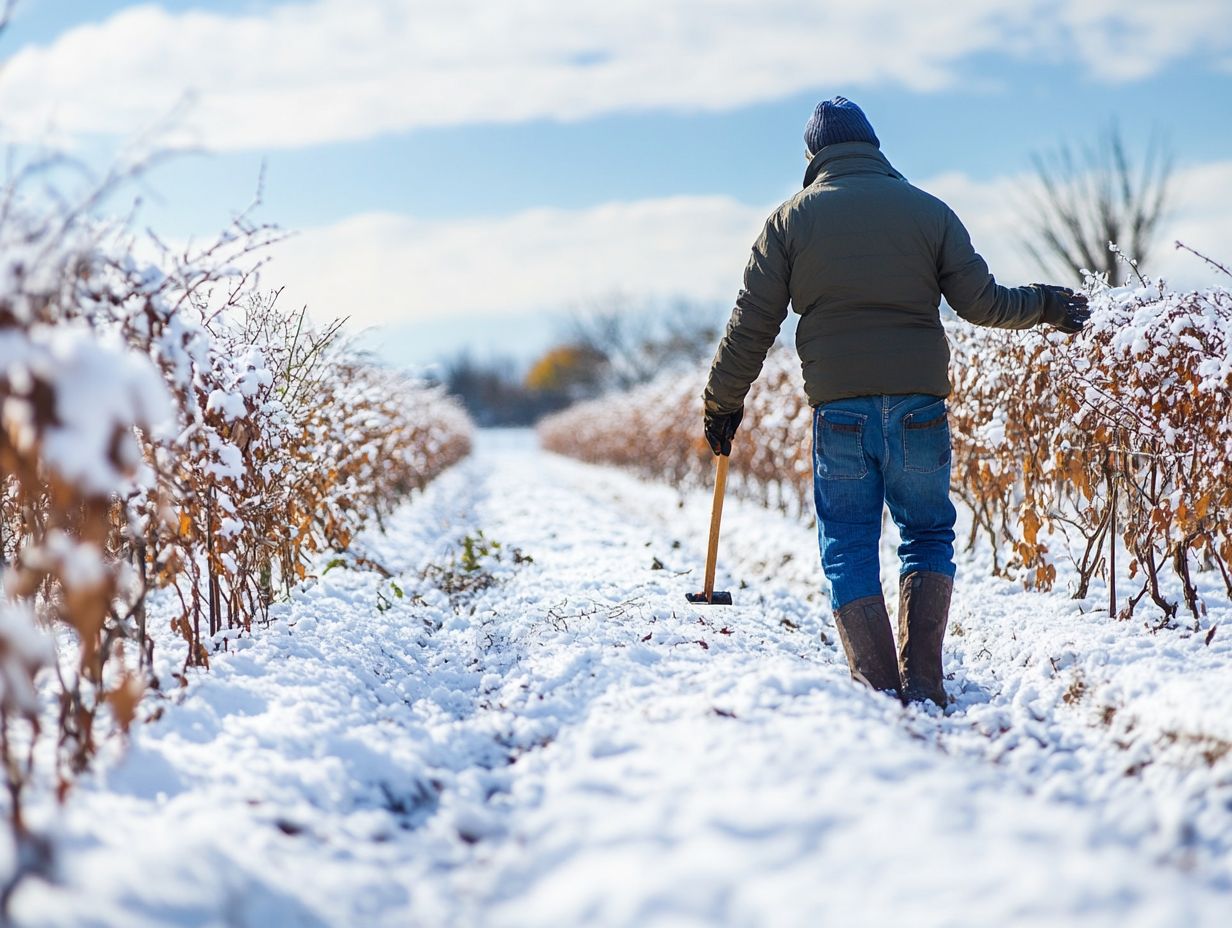
Natural pest control methods provide eco-friendly and non-toxic choices for managing pests. These methods seamlessly fit into integrated pest management, which combines various techniques to control pests effectively. By choosing these options, you can reduce health risks and promote environmental sustainability.
This approach is crucial in colder climates, where pests seek refuge indoors to escape harsh weather.
Choose Eco-Friendly Pest Control Methods
Opt for eco-friendly and non-toxic options that use natural predators, botanical insecticides, and traps. These alternatives minimize health risks linked to chemical methods.
For example, introducing beneficial insects like ladybugs can effectively lower the number of cockroaches and other harmful pests without endangering humans or pets.
Botanical insecticides, such as neem and pyrethrin, disrupt pests nervous systems and are recommended for their low toxicity. Using traps with attractants designed to capture rodents targets infestations efficiently while fostering a balanced ecosystem and safeguarding overall health.
Chemical Pest Control Options
Chemical pest control options should be your last line of defense when facing severe infestations. It s vital to understand when and how to use these chemicals effectively.
While chemicals can quickly reduce pest populations, responsible use is crucial, especially in winter when unwanted pests like cockroaches and rodents invade homes and businesses.
When and How to Use Chemicals
Knowing when and how to use chemicals for pest control is essential for managing pest populations that threaten your food supply.
This requires careful analysis of pest life cycles and behaviors to determine the best timing for applications. Proper technique is vital; for instance, using special spray tools that minimize drift reduces unintended exposure to non-target species, including beneficial insects and humans.
Always adhere to label instructions, as these guidelines ensure both efficacy and safety. Combine chemical methods with cultural, biological, and mechanical controls to create a holistic pest management strategy. This approach not only addresses immediate concerns but also aims for sustainable long-term solutions.
Managing Pest Infestations in Cold Climates
Managing pest infestations in cold climates demands immediate attention and a strategic approach. Act quickly to address pest problems before they escalate!
Start by identifying the specific type of pest and assessing the extent of the infestation. Then, implement effective control strategies that align with integrated pest management principles, ensuring a comprehensive and sustainable solution.
Steps to Take When Dealing with an Infestation
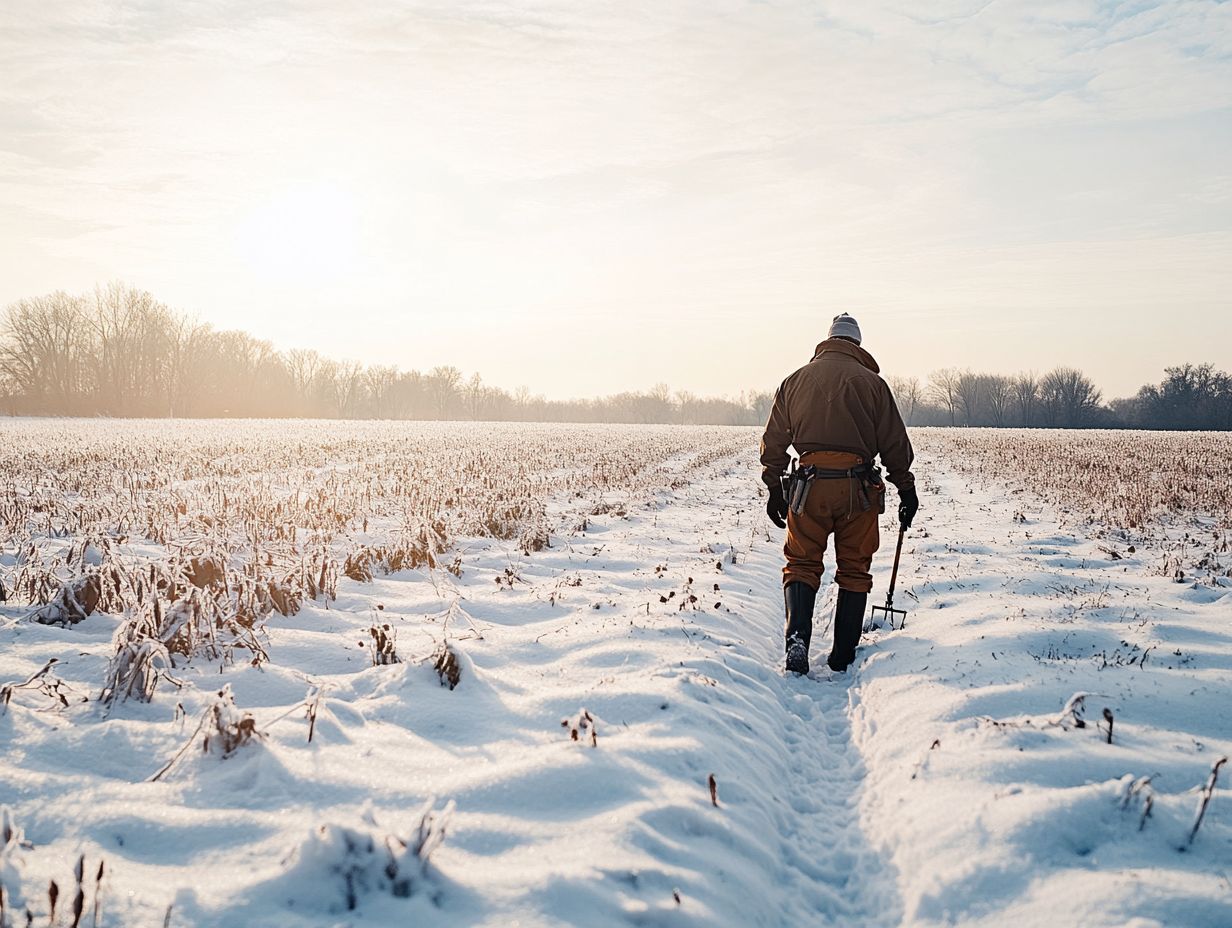
When facing a pest infestation, it’s essential to take key steps: start with a thorough inspection, identify the specific pests, and implement targeted interventions to effectively reduce their populations.
Maintaining detailed records of pest sightings and control measures is crucial. This can provide invaluable insights for your future management strategies. By monitoring the situation over time, you’ll gain a deeper understanding of pest life cycles and population trends.
Incorporating physical pest control methods like traps and barriers can significantly enhance your chemical interventions. Choosing crop varieties that resist specific pests boosts crop health and reduces your reliance on pesticides, paving the way for a more sustainable approach.
Maintaining a Pest-Free Environment in Cold Climates
To maintain a pest-free environment in cold climates, embrace long-term strategies that incorporate combined pest control methods. This means prioritizing prevention and consistently monitoring pest populations while also understanding pest behavior in cold weather.
By adopting these approaches, you can significantly reduce health risks and ensure a stable food supply throughout the winter season.
Long-Term Strategies for Pest Management
Effective long-term pest management requires maintaining a pristine facility and consistently monitoring for pests.
Embracing methods such as crop rotation and selecting resilient plant varieties can significantly bolster your community’s ability to tackle pest-related challenges. Crop rotation disrupts pest life cycles, naturally reducing their populations, while a diverse selection of plants can deter harmful insects and attract beneficial ones.
Participating in community initiatives like sharing updates about local pest outbreaks and collaborating on pest control measures can lead to a more effective and resilient pest management approach. This also addresses health hazards associated with rodents and cockroaches.
By fostering cooperation, your community can safeguard its crops, enhance biodiversity, and promote overall environmental health. This creates a balanced food chain that supports biodiversity, including species like the monarch butterfly.
Frequently Asked Questions
What are the top cold-climate pest management strategies?
The top cold-climate pest management strategies include preventive measures such as sealing openings to stop pests from entering, removing food sources, and ensuring proper waste management. Additionally, understanding pest resistance in cold climates can enhance your approach, while using traps, baits, and pesticides also helps control existing infestations.
How can I prevent pests from entering my home in cold climates?

Make sure to seal all cracks and gaps in your walls, floors, and foundation. Also, remove potential food sources, such as crumbs or standing water, and keep your home clean and clutter-free.
Are there any natural pest control methods for cold climates?
Yes, several natural pest control methods can be effective in cold climates. These include using essential oils, diatomaceous earth, and natural predators, along with proper sanitation and maintenance practices to deter pests.
How often should I inspect my home for pests in cold climates?
It is recommended to inspect your home for pests at least once a month. However, if you notice any signs of infestation, such as droppings or damage, conduct a thorough inspection immediately.
What should I do if I find a pest infestation in my home in a cold climate?
If you find a pest infestation in your home, it’s best to seek professional pest control services. They can properly identify the pest and provide effective treatment and prevention methods.
How can I protect my outdoor plants from pests in cold climates?
To protect your outdoor plants from pests in cold climates, use row covers, pest sprays, and natural predators.
Regularly check your plants for pests. If you see any signs of trouble, take action right away!
Keep your plants safe and thriving! Take the time to protect them today.

